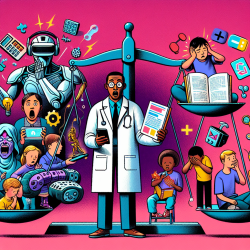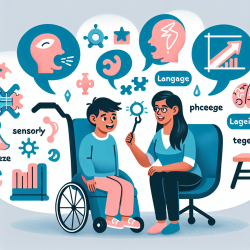Introduction
In the realm of speech-language pathology, ensuring the well-being of children is paramount. One of the often-overlooked aspects of child health is the impact of medications and supplements on liver function. The recent research article titled "AASLD practice guidance on drug, herbal, and dietary supplement–induced liver injury" offers valuable insights that can significantly enhance a practitioner's ability to manage and prevent drug-induced liver injury (DILI) in children. This blog aims to distill the key findings of this research and provide actionable steps for practitioners to implement these insights effectively.
Understanding Drug-Induced Liver Injury (DILI)
DILI is a complex condition that arises from the adverse effects of medications, herbal products, and dietary supplements on the liver. The research highlights the challenges in diagnosing DILI due to the absence of specific biomarkers and the need to exclude other potential causes of liver injury. The guidance provided by the American Association for the Study of Liver Diseases (AASLD) emphasizes the importance of understanding the different types of hepatotoxicity: direct, idiosyncratic, and indirect.
Key Research Insights
- Classification of DILI: The research categorizes DILI into direct, idiosyncratic, and indirect types, each with distinct characteristics and implications for diagnosis and management.
- Epidemiology and Risk Factors: The incidence of idiosyncratic DILI is relatively low, but certain medications and supplements are more frequently implicated. Understanding these risk factors can aid in early identification and intervention.
- Diagnostic Approach: A comprehensive diagnostic approach is essential, involving detailed medication history, laboratory assessments, and exclusion of other liver diseases.
- Management and Prevention: Immediate discontinuation of the offending agent and supportive care are crucial. The research also suggests potential benefits of corticosteroids in specific scenarios.
Implementing Research Insights in Practice
For practitioners, especially those involved in pediatric care, implementing the insights from this research can significantly enhance outcomes. Here are some actionable steps:
- Education and Awareness: Educate parents and caregivers about the potential risks of medications and supplements. Encourage them to report any unusual symptoms in children promptly.
- Comprehensive Medication Review: Regularly review the child's medication and supplement regimen, considering potential interactions and cumulative effects on liver health.
- Monitoring and Early Detection: Implement routine liver function tests for children on long-term medication or supplements known to pose a risk of DILI.
- Collaborative Care: Work closely with pediatricians and other healthcare providers to ensure a holistic approach to the child's health, addressing potential liver health concerns proactively.
Encouraging Further Research
While the current research provides a robust framework for understanding and managing DILI, there is a need for ongoing research to identify specific biomarkers and develop more precise diagnostic tools. Practitioners are encouraged to participate in or support research initiatives that aim to advance our understanding of DILI and improve patient outcomes.
To read the original research paper, please follow this link: AASLD practice guidance on drug, herbal, and dietary supplement–induced liver injury.










